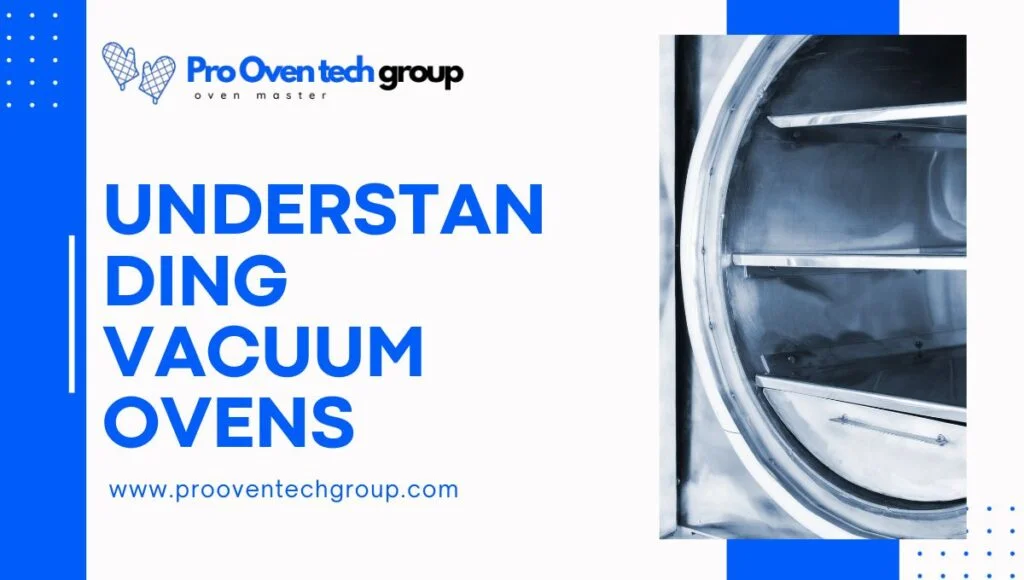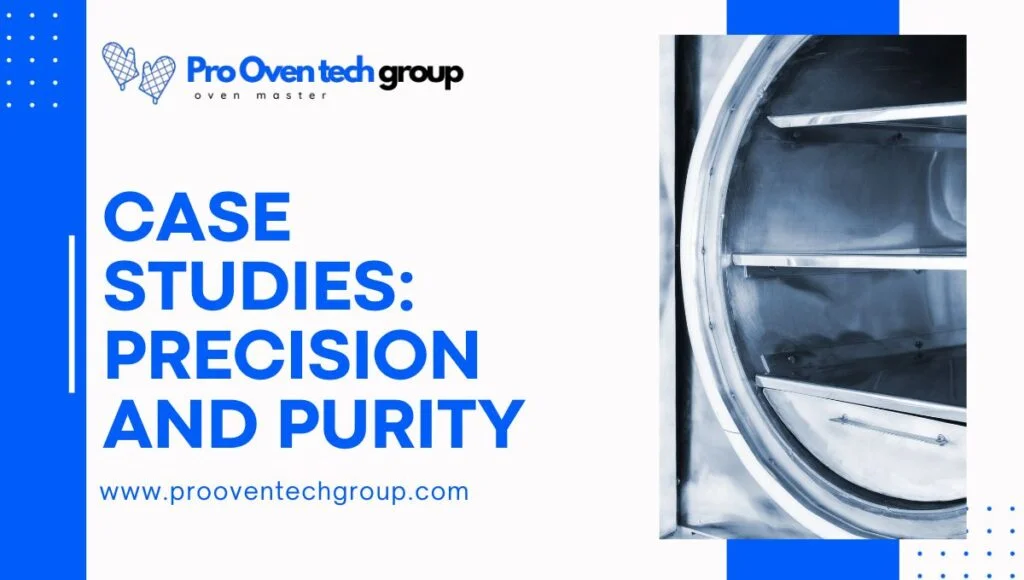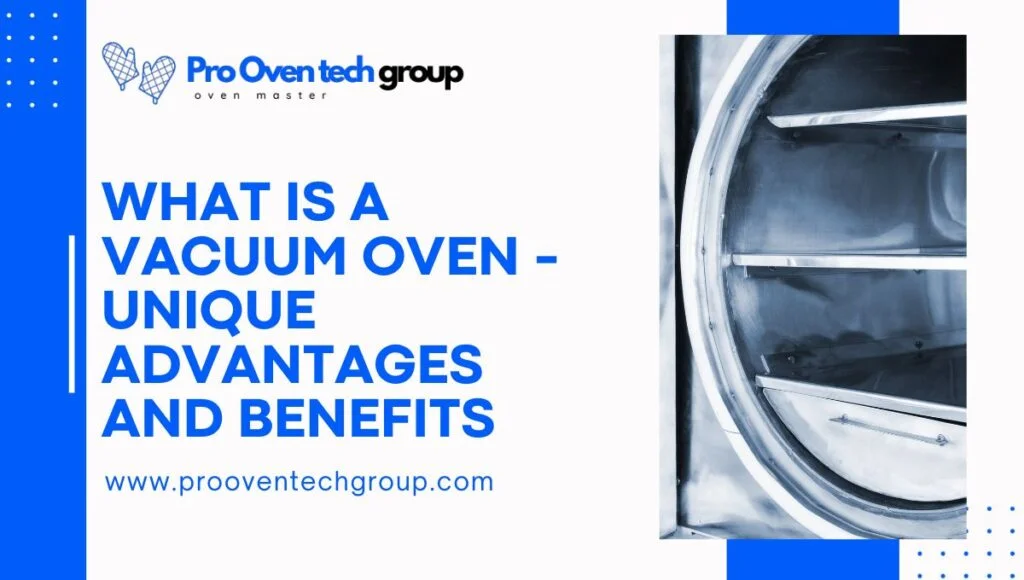What is a vacuum oven? A vacuum oven is a specialized device utilized in various industries and scientific research laboratories. Its primary function is to dry, cure, and process materials without exposing them to the atmospheric air. By creating a vacuum, the oven eliminates the presence of air molecules and any potential air-borne contaminants.
Simply put, a vacuum oven is a heat-treating machine that utilizes vacuum conditions to conduct processes such as drying and curing. It allows for the precise removal of moisture and solvents, and performs these tasks at lower temperatures than conventional ovens, preventing thermal damage.
The unique advantage of a vacuum oven lies in its ability to dry heat-sensitive materials and perform delicate processes without oxidation or contamination. Thus, it is a crucial tool for industries such as electronics, pharmaceuticals, and aerospace where precision and purity are key.
Table of Contents
Understanding Vacuum Ovens

A vacuum oven is an ideal tool for heat treatment operations, especially in sensitive and critical applications where atmospheric conditions can impact results. In the following sections, we delve into the intricacies of its operation, advantages, and diverse applications.
Vacuum Creation and Control
The vacuum oven employs pumps and valves to create and control a vacuum environment, which is pivotal for its operation. This allows it to process materials without the potential for contamination or oxidative damage.
Temperature Regulation
The oven employs precise temperature regulation mechanisms, ensuring that heat-sensitive materials are processed optimally. Lower temperature operation than traditional ovens prevents thermal damage.
Material Handling
Vacuum ovens can handle a variety of materials, from delicate biological samples to robust industrial components. This adaptability extends their applicability across numerous industries.
Vacuum Oven Configurations
There are different configurations of vacuum ovens tailored to specific industry needs. These include horizontal and vertical configurations, each offering unique advantages in certain applications.
Functions and Uses
Vacuum ovens are multi-functional devices, widely used for several processes, notably drying, annealing, curing, and outgassing. They provide highly accurate control over heat and environment, making them invaluable in diverse research and industrial applications.
Drying
Vacuum ovens expedite the drying process by lowering the boiling point of solvents. This rapid drying prevents microbial growth and deterioration of heat-sensitive materials.
Annealing
In materials science, vacuum ovens facilitate annealing – a heat treatment process that alters the physical properties of a material to reduce hardness and increase ductility.
Curing
Curing, a process of hardening materials by cross-linking polymer chains, is another primary use of vacuum ovens. This controlled environment ensures uniform curing without air-borne contaminants.
Outgassing
Vacuum ovens are instrumental in outgassing processes, effectively removing gas molecules trapped in solid or liquid materials. This capability is crucial in the manufacturing of electronic components and polymer products.
Vacuum Oven Mechanisms
Vacuum Oven Mechanisms refer to the methods and techniques employed by the oven to execute the drying, curing, or outgassing processes. These are the building blocks of its functionality.
- Vacuum Creation: Vacuum pumps and valves are used to create a vacuum inside the oven.
- Heat Generation: Electric coils or gas burners are used to generate heat for the various processes.
- Temperature Regulation: Sophisticated controllers are used to maintain precise temperature levels.
- Material Placement: Materials are placed on trays or racks that can be adjusted as per requirement.
- Process Monitoring: Sensors and gauges are used to monitor the ongoing process and provide feedback for adjustments.
Benefits of Low-Temperature Drying
Low-temperature drying in vacuum ovens offers substantial advantages, primarily preserving material integrity and enhancing process efficiency.
- Material Preservation: Low-temperature drying minimizes thermal degradation of sensitive materials.
- Improved Efficiency: It enables faster drying times by reducing the boiling point of solvents.
- Energy Savings: Operating at lower temperatures can save energy compared to traditional ovens.
- Reduced Oxidation: The vacuum environment minimizes oxidative damage to materials.
- Moisture Removal: It ensures thorough moisture removal, even in complex components.
- Contamination Prevention: The absence of air prevents airborne contaminants from affecting the drying process.
Vacuum Ovens Across Industries
Vacuum ovens find utility in a multitude of industries, owing to their precision, purity, and adaptability. These industries range from electronics to food processing, each benefiting from the unique capabilities of vacuum ovens.
Electronics Industry
In the electronics industry, vacuum ovens play a crucial role in the manufacturing and testing of components. They are instrumental in processes like outgassing, which is essential for producing high-quality electronic parts.
Pharmaceuticals and Biotechnology
Vacuum ovens are indispensable in pharmaceutical and biotech laboratories, particularly in processes requiring sterilization, drying, and thermal treatment. They ensure the safety, efficacy, and longevity of various medicinal and biological products.
Food Processing
In food processing, vacuum ovens are used for dehydration and preservation purposes. They provide efficient drying at lower temperatures, preserving the taste, texture, and nutritional content of the food products.
Case Studies: Precision and Purity

In this section, we’ll examine case studies highlighting the efficiency, precision, and purity of vacuum ovens in various industrial applications.
Case Study 1: Electronics Manufacturing
Vacuum ovens in electronics manufacturing enhance component quality and longevity by ensuring outgassing processes are contamination-free.
Case Study 2: Pharmaceutical Sterilization
In pharmaceutical industries, vacuum ovens demonstrate remarkable efficiency in sterilizing medical equipment, reducing the risk of contamination.
Case Study 3: Food Dehydration
Vacuum ovens in food industries support efficient dehydration processes, preserving nutritional content and enhancing shelf life.
Case Study 4: Polymer Curing
Vacuum ovens facilitate controlled curing in polymer production, enhancing product durability by preventing air-borne contaminants.
Case Study 5: Aerospace Component Testing
In aerospace industries, vacuum ovens are crucial in testing components under conditions simulating high-altitude environments, ensuring reliability and safety.
Conclusion What is a vacuum oven
The multifunctional capabilities of vacuum ovens make them an integral tool in diverse industries, from electronics manufacturing to food processing. Their precise control over heat and environment ensures high-quality outcomes, whether it’s outgassing electronic components, sterilizing pharmaceutical equipment, or dehydrating food.
In an era where efficiency, precision, and purity are paramount, the role of vacuum ovens cannot be overstated. As industries continue to evolve, the applications of vacuum ovens are likely to expand, underscoring their versatility and importance in modern manufacturing and research.
FAQS
Q1. What is the difference between a vacuum oven and an oven?
A1. A vacuum oven creates a controlled environment with low air pressure, while a regular oven operates at atmospheric pressure.
Q2. What is the principle of vacuum oven drying?
A2. The principle behind vacuum oven drying is the reduction of air pressure, which lowers the boiling point of solvents, allowing for faster and more efficient removal of moisture from materials.
Q3. How is heat transferred in a vacuum oven?
A3. In a vacuum oven, heat is transferred through convection and radiation, rather than conduction as in traditional ovens. This allows for more uniform heating of materials and reduces the risk of uneven drying.
Q4. Use of microwave oven for baking?
A4. Microwave ovens are typically used for quick heating or cooking of food, but not for baking. The traditional heating methods in a vacuum oven provide more precise and consistent temperature control, making them better suited for baking processes.
Q5. Vacuum oven method moisture content?
A5. The vacuum oven method is a common technique for determining the moisture content of materials by measuring the weight loss after drying in a controlled vacuum environment. This method offers accurate and reliable results, making it a preferred choice for industries that require precise moisture control in their processes.

